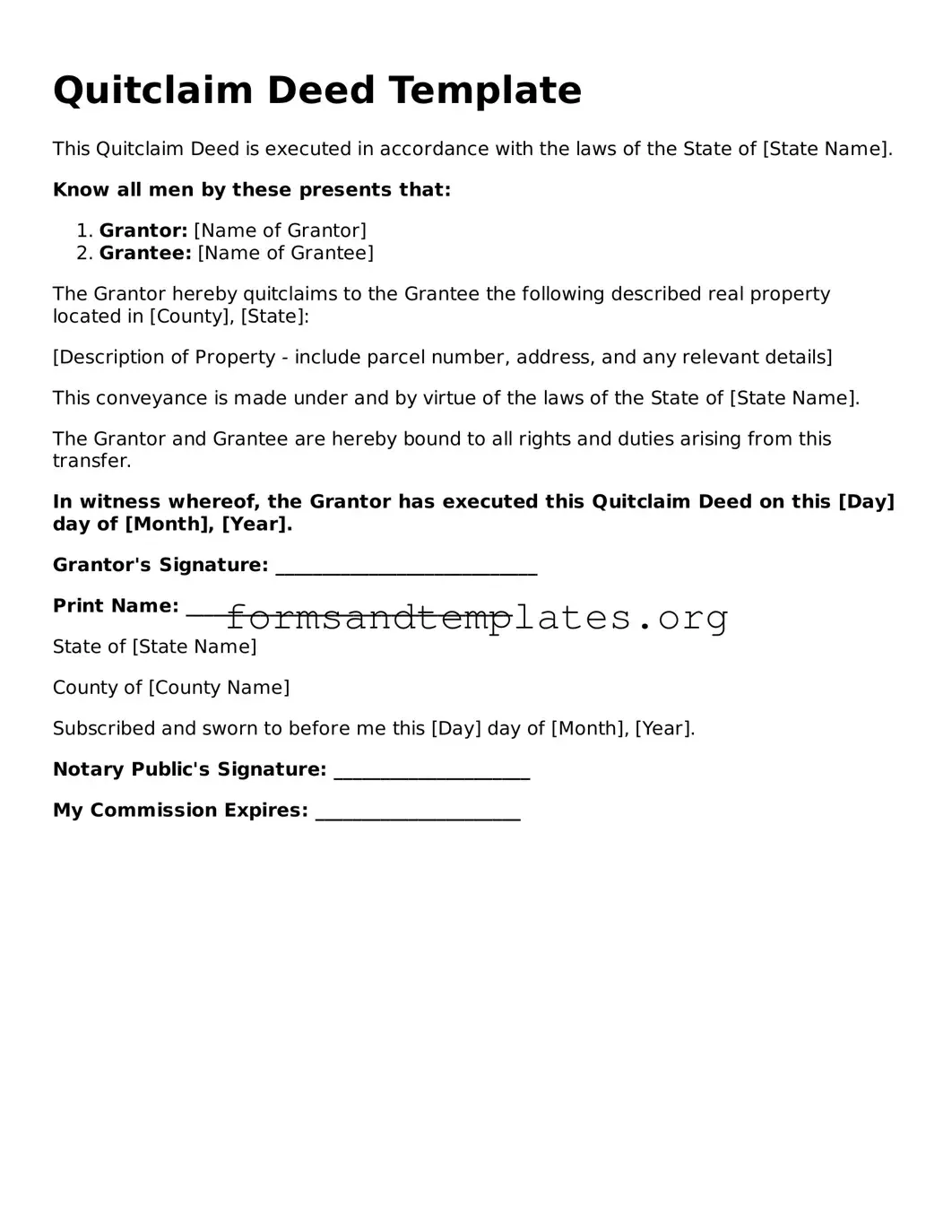Attorney-Verified Quitclaim Deed Template
A Quitclaim Deed is a legal document used to transfer ownership of real estate from one party to another without any warranties or guarantees regarding the property title. This form is often utilized in situations such as divorce settlements or transferring property between family members. For those looking to facilitate a property transfer, filling out the Quitclaim Deed form is a straightforward process; click the button below to get started.
Access Editor Here
